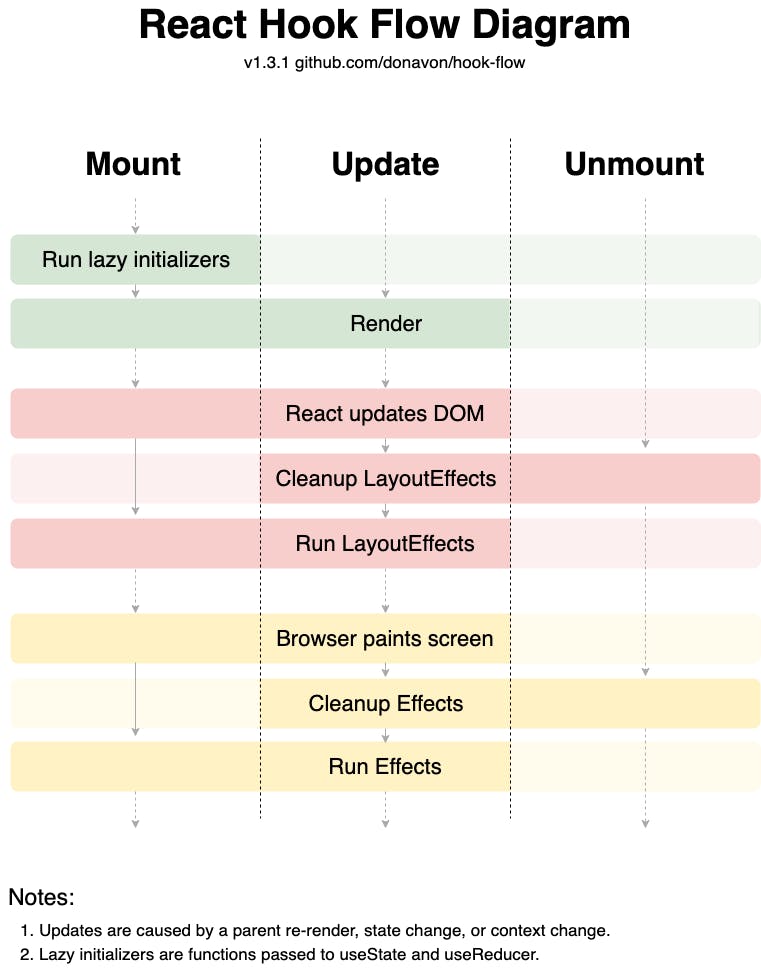Down the rabbit hole
Give me a component A and I'll:
On first render
- Run
A'sstate lazy initializers. - Render
A. - Update the
DOM. - Run
A'slayout effects. - Paint the
DOMupdates from3. - Run
A'seffects.
On subsequent renders (props changed or state changed)
- Render
A. - Update the
DOM. - If any of
A'slayout effects don't have a dependency array or any of its dependencies has changed, run their clean-up functions. - If any of
A's layout effect's don't have a dependency array or any of its dependencies has changed, run them. - Paint the
DOMupdates from2. - If any of
A'seffects don't have a dependency array or any of its dependencies has changed, run their clean-up functions. - If any of
A'seffects don't have a dependency array or any of its dependencies has changed, run them.
When rendering your app doesn't render A anymore
- Run
A'slayout effects' clean-up functions. - Run
A'seffects' clean-up functions.
The nuance
You have probably seen (if not, you should take a deep look!) this before:
 It does an awesome job at explaining the order and the phases on which stuff happens, but even though most React devs understand when their
It does an awesome job at explaining the order and the phases on which stuff happens, but even though most React devs understand when their effects run, I've seen them having a hard time understanding not every rerender trigger clean-ups.
When a new rerender happens, dependencies are checked. If any of the dependencies changed (or there's no dependencies array), it cleans up the previous
effectbefore rerunning theeffect.
What's a clean-up function?
The clean-up function run on the Nth render is the function returned by an effect on render Nth - 1.
Beware! This means clean-up functions on render Nth will likely be closed over (hold a closure of) Nth - 1's state!
When does a dependency change?
React uses Object.is to compare dependencies. Object.is is an strict equality check (===) on esteroids: while the strict equality comparison algorithm is meant to lie about 0 === -0 and NaN === NaN to comply with IEEE 754, Object.is doesn't.
Try it yourself
Sandbox here.
Glossary
Render(andrerender): run a functional component's body or run a class component'srendermethod. Obtaining theJSXreturned from it and handing it to React so it knows how to update theDOM.Update the DOM: performDOMmutations through actual JS'sDOMAPI. Updating theDOMsynchronously schedules tasks to repaint the screen that will happen asynchronously.- Paint the
DOMupdates: giving the browser a break so it can paint any scheduledDOMupdate.

